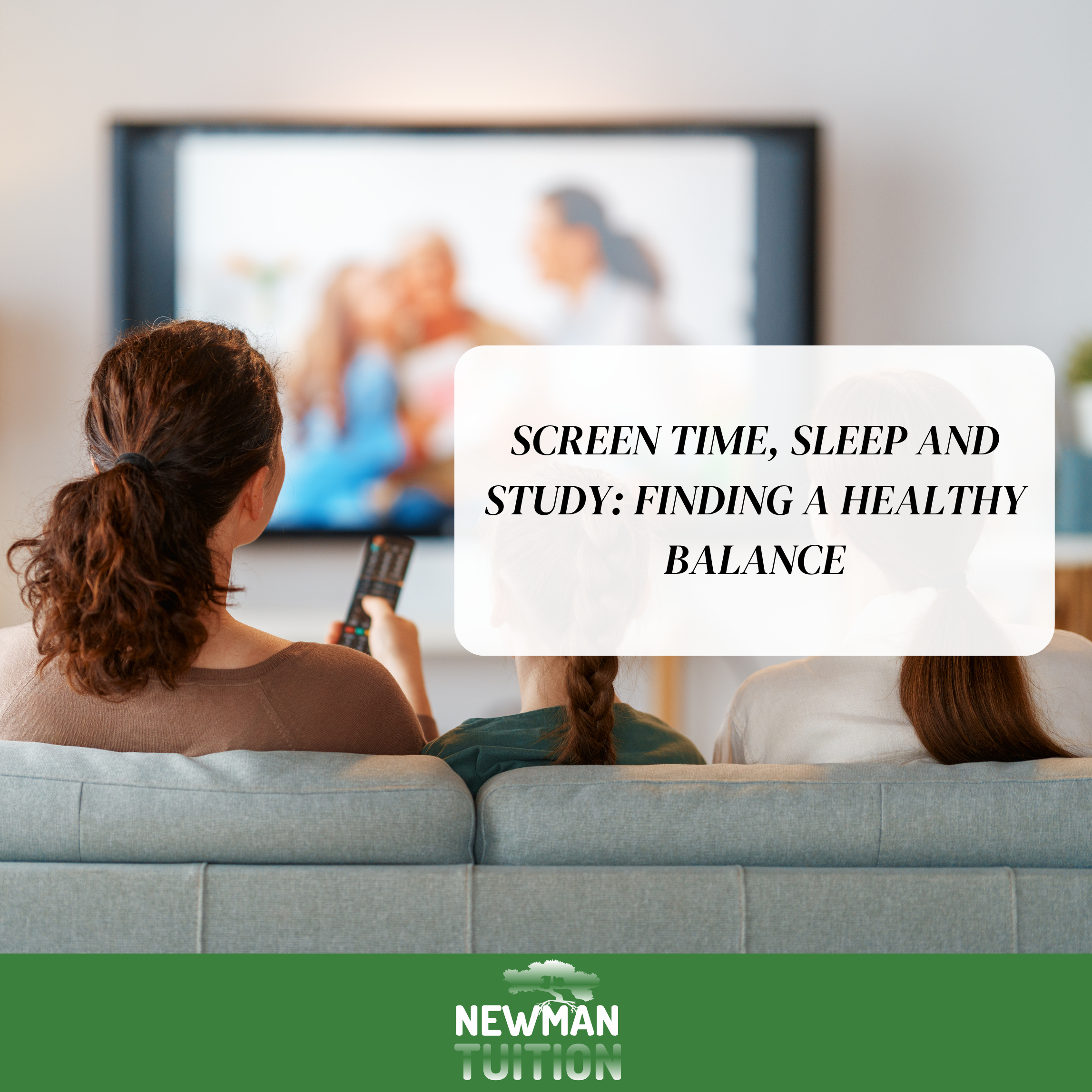Screen Time, Sleep and Study: Finding a Healthy Balance

In today’s digital world, screens are an unavoidable part of life. From online lessons and homework platforms to social media and streaming, students are spending more time on their devices than ever before. While technology can be an excellent tool for learning, excessive screen time can have a significant impact on both focus and academic performance.
So, how can students find the right balance between study, screen use, and sleep?
The Link Between Screen Time and Focus
Research shows that too much screen time can make it harder for students to concentrate. The constant notifications, bright lights, and rapid flow of information can overload the brain, making it difficult to switch between entertainment and learning.
Overexposure to screens, particularly social media, can also shorten attention spans. When students are used to the instant gratification of scrolling, studying for long periods without distraction becomes much harder. This can lead to less effective revision and lower academic results.
Why Sleep Matters More Than You Think
Sleep plays a crucial role in memory, concentration, and emotional regulation. These are all vital for academic success. However, the blue light emitted by screens can interfere with melatonin production, delaying sleep and reducing its quality.
Late-night scrolling or gaming often leads to fewer hours of rest and increased fatigue the next day. This can make students more irritable, less productive, and less able to retain new information. Over time, sleep deprivation can affect mood, motivation, and even mental health.
Finding a Healthy Balance
Finding balance does not mean cutting out screens altogether. Instead, it is about building healthier habits and making conscious choices around technology use.
Here are a few practical strategies:
- Create a tech-free bedtime routine: Encourage students to switch off devices at least an hour before bed. Reading a book or journalling instead can help the brain wind down.
- Set clear screen boundaries: Use apps or built-in settings to limit time on social media or non-educational platforms.
- Prioritise productive screen use: Not all screen time is equal. Online learning, research, and educational videos can enhance understanding when used thoughtfully.
- Incorporate digital breaks: Follow the 20-20-20 rule. Every 20 minutes, look at something 20 feet away for 20 seconds. This helps reduce eye strain and mental fatigue.
- Encourage offline hobbies: Sports, art, music, and reading give students a valuable mental break from screens while supporting creativity and wellbeing.
Supporting Students to Build Better Habits
Parents and tutors play a vital role in helping students develop a healthy digital balance. Open conversations about how screen use affects sleep and focus can encourage young people to reflect on their own habits.
Setting consistent boundaries together, rather than imposing strict rules, helps students take ownership of their wellbeing. Small, sustainable changes often make the biggest difference.
In Summary
Screens are here to stay, and when used wisely, they can enhance learning and connection. However, finding balance is essential. By encouraging mindful screen habits, prioritising rest, and maintaining open communication, students can protect their focus, improve sleep, and perform at their best, both in and out of the classroom.